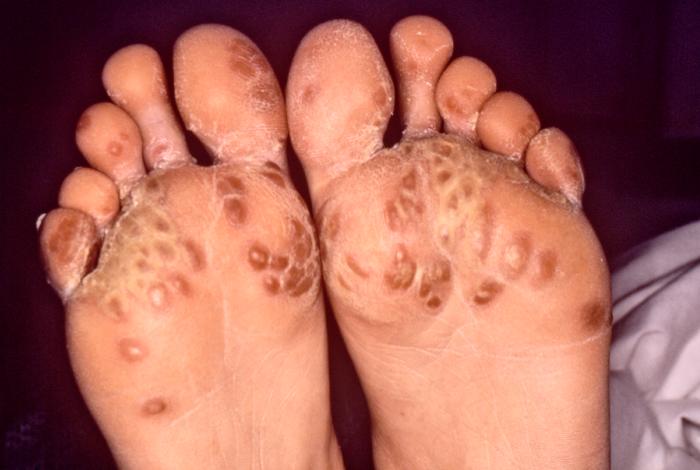Keratoderma blennorrhagica
| Keratoderma blennorrhagica | |
 | |
|---|---|
| 'A differential diagnosis revealed that the rash on the bottom of this individual’s feet, known as keratoderma blennorrhagica, was due to Reiter's syndrome, not a syphilitic infection as was initially suspected' - CDC/ Dr. M. F. Rein | |
| ICD-9 | 701.1 |
| DiseasesDB | 21855 |
| MeSH | D007642 |
Keratoderma blennorrhagica (or keratosis blennorrhagica) are skin lesions commonly found on the palms and soles but which may spread to the scrotum, scalp and trunk also.
Keratoderma blennorrhagica is commonly seen as an additional feature of Reactive Arthritis (Reiter's Syndrome) in almost 15% of male patients. The appearance is usually of a vesico -pustular waxy lesion with a yellow brown colour. These lesions may join together to form larger crusty plaques with desqaumating edges and priapism.